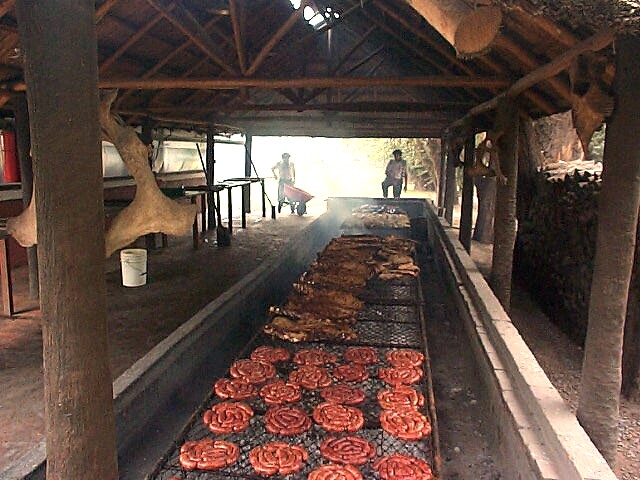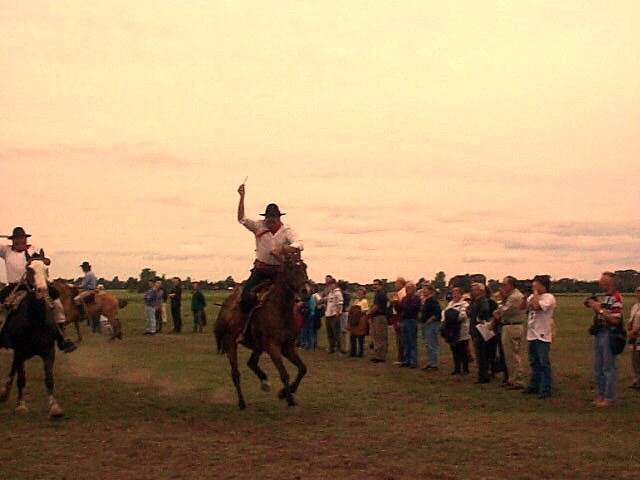
- November 1, 1999
- Buenos Aires, Argentina
Hello again from Buenos Aires. As I'm sure you are now after reading about my trip to Bolivia and Chile, I too was tired on Sunday when our group of Americans took our last trip together. Our destination: Estancia Santa Susana about an hour outside of Buenos Aires.
Estancias were large farms that the Spanish set up during the colonial days and eventually led to the rise of the gaucho, the famous Argentine cowboy. In Argentina the gauchos were very important historically and continue to be important in terms of a national identity. On top of that they're great for attracting tourists, so most of the estancias now a days are tourist destinations with little real cattle raising.
Our trip was fairly basic. We shared the day with a few hundred other tourists, but there was ample time to ride horses and enjoy the other fun and games. Yes, Mr. Rutz, I have now ridden a horse across the Argentine Pampa.

After a few turns at trying to make the horses go (these horses knew that we were tourists) we set off to down an asado. Strictly the word asado translates as barbecue, but that hardly does justice to the Argentine tradition. Here in Argentina beef is the staple course for most meals. Numerous Argentines have sworn to me that meat is much more healthy than bread, but I'm sticking to my elementary teaching of the good old food pyramid on this one. In any case, cattle has always been one of Argentina's main products. Because there are so few inhabitants of the vast plains that make up the Pampa the cattle just roam and roam. They're not fed any sort of artificial food or corn, they just graze what they can find. As a result, the beef here is not as mushy as in the States and is known the world over as the finest beef that can be found. American ranchers so fear the quality of Argentine beef that the American government has strong tariffs against Argentine beef and it's expensive and hard to come by in States.
Back to the asado. An asado is a feast of meat cooked slowly over wood coals. It usually includes bread, wine, a salad or two, sausage, and portions of meat big enough to satisfy a lion. Certainly not a vegetarian's kind of thing. After eating we were treated to a show of various native Argentina dances and songs, not the least of which was the famous "Caminito" tango. Below is a view of Santa Susana's parilla, where the asado is cooked.

Once we had past about an hour indoors listening to the music and letting our food settle we were able to move outside to watch some gaucho games. The gauchos constructed a sort of gallows looking contraption with quarter sized rings hanging down from the cross beam. Then, at full gallop, they would attempt to spear this ring with a small metal spear. Our particular gauchos weren't too bad at this game. I think their real incentive was that whenever they speared one of the rings they got to pick out a lady from the crowd and present both the ring and a kiss as a souvenir of the day.

Now I'm back in Buenos Aires to take my exams, write my last few papers, and take my last few photos. I'll be leaving on Saturday the thirteenth and making a two day stop in Mexico to visit my good friend Er�n who some of you may remember from Portage Northern. I'll be in Washington on the sixteenth to visit a particular someone and to work for a while. I'll be seeing all of you fine Michigan folk for Christmas.
Hasta entonces,
Love,
Jon